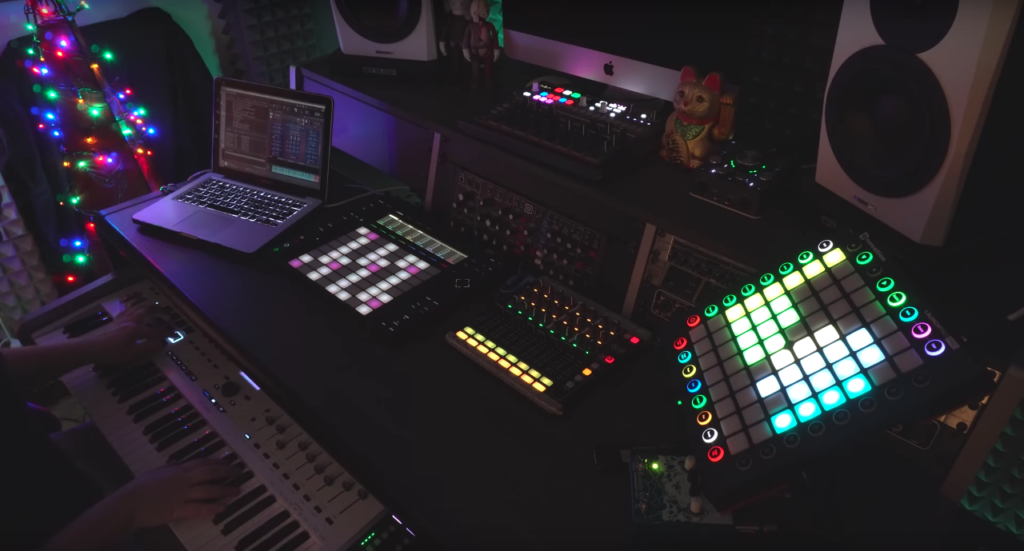The Perfect Music Making Setup with Ableton 11: Creating Your Ultimate Studio

Creating music is a blend of artistic expression and technical finesse. To achieve the best results, having the perfect music making setup is crucial. In this guide, we will delve into the world of music production and explore how to craft the ultimate studio environment using Ableton 11. From selecting the right hardware and software to optimizing your workflow, this article covers everything you need to know.
The Perfect Music Making Setup with Ableton 11
Crafting the ideal music making setup with Ableton 11 involves a careful combination of hardware, software, and ergonomic design. Here’s how to assemble a studio that nurtures your creativity and empowers your musical journey:
Choosing the Right Hardware
Selecting the right hardware is the foundation of your music production setup. LSI Keywords: music production equipment, essential studio gear
When choosing hardware, consider factors such as:
- Computer: A powerful computer is essential for running Ableton 11 smoothly. Opt for high RAM and processing power.
- Audio Interface: Invest in a quality audio interface for pristine sound quality and minimal latency.
- MIDI Controllers: MIDI keyboards and controllers enhance your interaction with Ableton’s virtual instruments.
- Studio Monitors: Accurate studio monitors are crucial for precise sound monitoring and mixing.
- Headphones: High-quality headphones help you catch nuances in your music.
Selecting the Right Software
The software you choose greatly impacts your music production process. LSI Keywords: digital audio workstation, Ableton Live 11
- Ableton Live 11: This versatile DAW offers an intuitive interface, powerful MIDI capabilities, and a vast library of instruments and effects.
- Virtual Instruments: Ableton’s library includes a wide range of virtual instruments to experiment with different sounds.
- Audio Effects: Explore Ableton’s array of audio effects to manipulate and enhance your tracks.
- Sample Libraries: Utilize sample libraries for instant access to diverse sounds and textures.
- Third-Party Plugins: Extend Ableton’s functionality with third-party plugins for unique effects.
Ergonomic Studio Setup
Creating a comfortable and efficient workspace is essential for long hours of productive music making. LSI Keywords: ergonomic studio design, music production setup tips
- Desk and Chair: Choose a desk and chair that promote good posture and comfort during extended sessions.
- Monitor Placement: Position your monitors at ear level and create an equilateral triangle with your head for optimal sound.
- Keyboard and Mouse: Use ergonomic keyboard and mouse setups to prevent strain.
- Cable Management: Keep cables organized to avoid clutter and distractions.
- Acoustic Treatment: Add acoustic panels to control sound reflections and improve the sonic accuracy of your room.
Workflow Optimization
An efficient workflow streamlines your music creation process. LSI Keywords: music production workflow, Ableton shortcuts
- Custom Templates: Design templates for different genres to kickstart your projects.
- Keyboard Shortcuts: Mastering essential shortcuts speeds up navigation and editing tasks.
- Color Coding: Assign colors to tracks and clips for easy visual identification.
- Grouping and Bussing: Group similar tracks and use busses for organized mixing.
- Automation Mapping: Map automation parameters to external controllers for expressive real-time control.
Soundproofing and Acoustics
Creating a controlled acoustic environment enhances the quality of your recordings and mixes. LSI Keywords: home studio acoustics, soundproofing techniques
- Room Choice: Select a room with minimal external noise and good dimensions.
- Bass Traps: Use bass traps to manage low-frequency resonances.
- Diffusers and Absorbers: Balance sound reflections with diffusers and absorb excess sound with panels.
- Isolation: Soundproof doors and windows to prevent sound leakage.
FAQs
How can I enhance my music’s sound quality in Ableton 11?
Optimize your sound quality by using high-quality samples, applying proper EQ and compression, and paying attention to gain staging during mixing.
What’s the advantage of using MIDI controllers in my setup?
MIDI controllers provide tactile control over virtual instruments, enabling expressive performances and dynamic sound shaping.
Can I use third-party plugins with Ableton 11?
Yes, Ableton 11 supports third-party plugins, allowing you to expand your sonic palette and experiment with various effects.
How do I prevent latency issues in my audio recordings?
To minimize latency, use a low-latency audio interface, reduce buffer sizes, and optimize your computer’s performance for audio production.
What’s the benefit of acoustic treatment in a home studio?
Acoustic treatment improves the accuracy of sound monitoring, enhances recordings, and ensures your mixes translate well to other playback systems.
How can I improve my music production workflow?
To enhance your workflow, create templates, utilize shortcuts, organize your projects effectively, and utilize grouping and automation techniques.
Conclusion
Crafting the perfect music making setup with Ableton 11 is a blend of technical know-how and creative vision. By carefully selecting hardware and software, optimizing your workspace, and refining your workflow, you can create an environment that nurtures your musical expression. Remember, your setup is a reflection of your unique style, so tailor it to suit your needs and aspirations.
No Comments